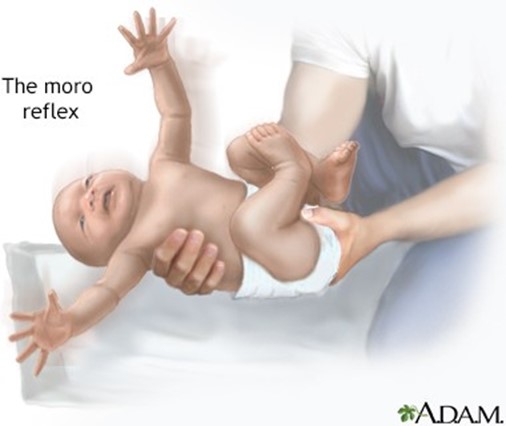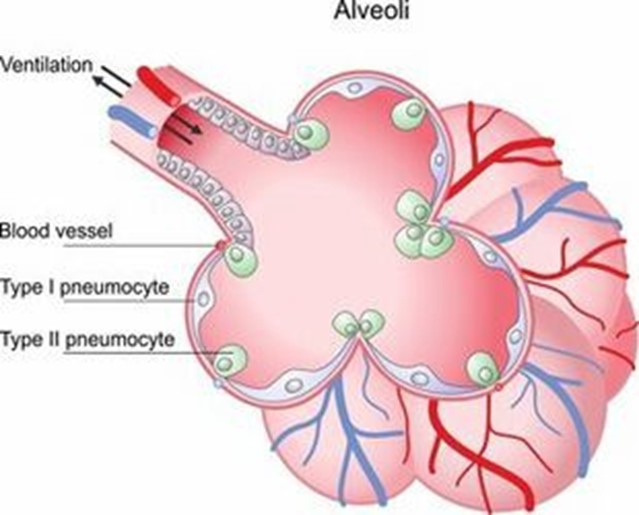A nurse is preparing to examine a post-term newborn immediately following delivery. Which of the following findings should she expect to observe? (Select all that apply.).
Moro reflex.
Vernix in the folds and creases.
Abundant lanugo.
Heel to ear maneuverability.
Correct Answer : A
Choice A rationale:

The Moro reflex is a normal finding in newborns, including those born post-term. It is a primitive reflex that should be present and indicates a healthy neurological system.
Choice B rationale:
Vernix, a protective white substance that coats the skin in utero, is typically absent or minimal in post-term newborns due to its decreased production as gestation progresses. Therefore, it would not be expected in a post-term infant.
Choice C rationale:
Lanugo, the fine hair covering a newborn's body, is usually present in greater amounts in preterm infants. By the time a newborn is post-term, lanugo is typically sparse or absent, making it an unlikely finding.
Choice D rationale:
This maneuver assesses the flexibility of the newborn's joints. Post-term infants tend to have reduced flexibility and increased muscle tone, making this maneuver more difficult or restricted in this population.
Nursing Test Bank
Naxlex Comprehensive Predictor Exams
Related Questions
Correct Answer is B
Explanation
A. This condition typically results from excessive loss of acid, often due to vomiting or diuretics. It is not the most likely concern in a cold environment with an infant who has been crying and kicking.
B. A cold environment can lead to nonshivering thermogenesis in newborns, where they metabolize brown fat to generate heat. This process can lead to increased lactic acid production, potentially causing metabolic acidosis. The infant's fatigue following crying and kicking may indicate that the body has expended significant energy to stay warm, making metabolic acidosis a priority concern.
C. While hunger could be a reason for crying, it is not the priority concern in this scenario where environmental cold and fatigue are present.
D. Overstimulation might cause crying, but the environmental cold and subsequent risk of metabolic acidosis are more critical concerns in this context.
Correct Answer is B
Explanation
Choice A rationale:
Providing a heat source for the newborn is not the purpose of surfactant. Surfactant is a substance produced in the lungs to reduce surface tension and prevent alveolar collapse during expiration. It helps with the exchange of gases, but it does not generate heat.
Choice B rationale:

This is the correct answer. Surfactant plays a crucial role in assisting the alveoli to remain open by reducing surface tension. This, in turn, allows for proper gas exchange, especially of oxygen and carbon dioxide.
Choice C rationale:
Assisting the ductus arteriosus to remain open is not the purpose of surfactant. The ductus arteriosus is a fetal blood vessel that connects the pulmonary artery to the aorta, bypassing the lungs. After birth, it should close on its own, and surfactant does not influence this process.
Choice D rationale:
Providing energy to the newborn is not the purpose of surfactant. Energy for the newborn comes from nutrition, particularly breast milk or formula, and not from surfactant
Whether you are a student looking to ace your exams or a practicing nurse seeking to enhance your expertise , our nursing education contents will empower you with the confidence and competence to make a difference in the lives of patients and become a respected leader in the healthcare field.
Visit Naxlex, invest in your future and unlock endless possibilities with our unparalleled nursing education contents today
Report Wrong Answer on the Current Question
Do you disagree with the answer? If yes, what is your expected answer? Explain.
Kindly be descriptive with the issue you are facing.
